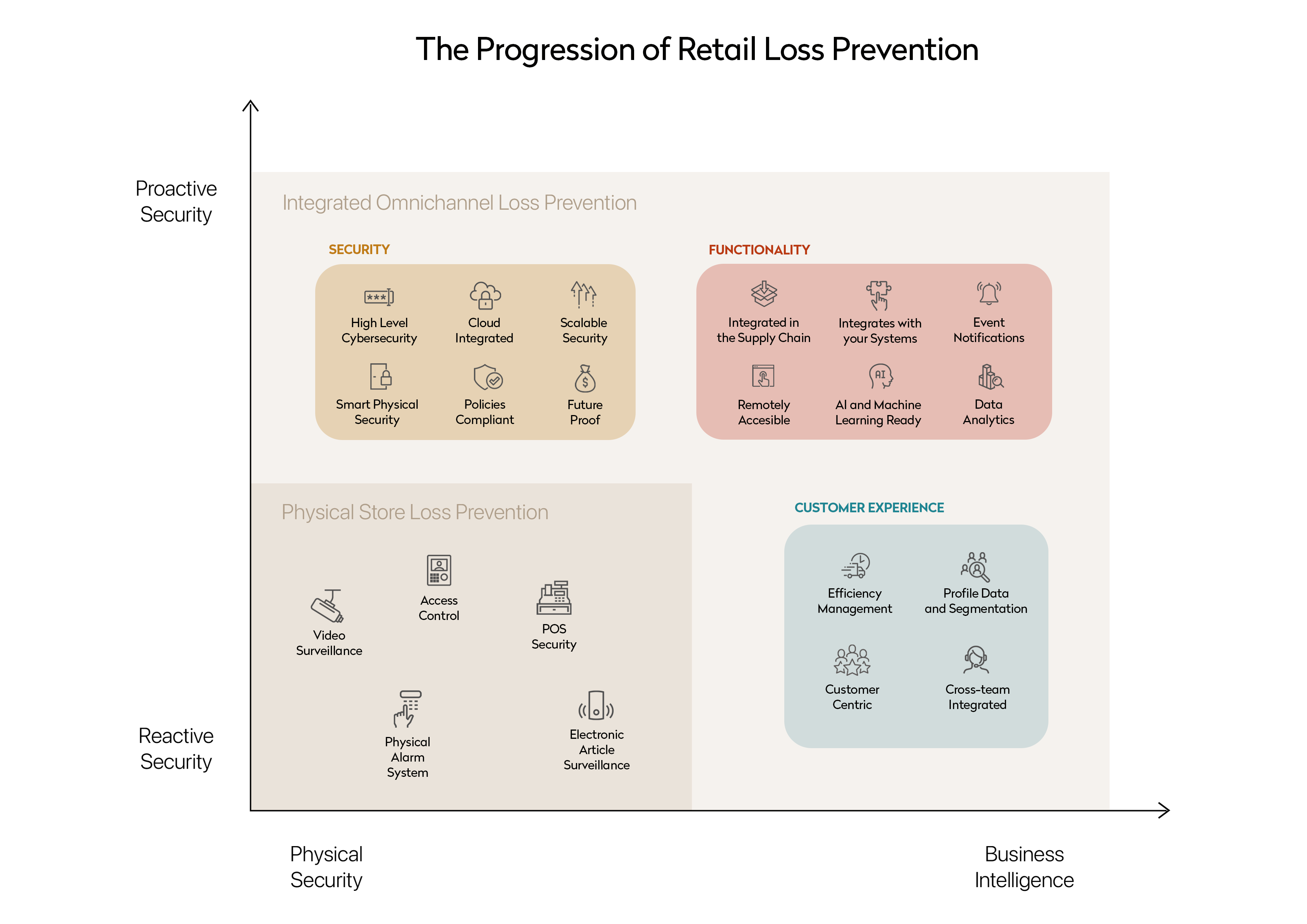Beyond Stock Shrinkage: An Omni-channel Retail Loss Strategy
How to create a profit protection strategy? There is no denying that protecting profits in a retail environment has become increasingly challenging due to a combination of multiple factors. Firstly, consumer behaviour and expectations have evolved, with customers now demanding a seamless purchasing experience that blends physical and online elements, including product trials, subscriptions, and easy returns. Secondly, rising costs have put pressure on retailers to save money wherever possible. Finally, technological advancements are driving competition and necessitate rapid adaptation, in a landscape of social and economic turbulence. These challenges are forcing retailers to find innovative ways to adapt and stay competitive or risk being left behind by those who can effectively implement them.
In today’s exciting and chaotic retail world, protecting profits is critical for companies looking to save millions, so it is crucial to design a Loss Prevention strategy that supports that. At Morphean, we have developed a comprehensive framework that can help you stay ahead of the curve and achieve your profit protection objectives.
What we will discuss:
- Understand the new retail environment and its challenges.
- Moving to a broad omni channel retail loss prevention strategy that is:
- Highly Secure
- Highly Functional
- Customer Centric
- Highly Secure
1. Understand the New Retail Environment and its Challenges.
The way consumers shop has drastically changed over the years from the traditional method of shopping solely at physical stores, to the rise of online retailers, and finally to the emergence of cross-channel experiences, where customers can shop on a website, receive their purchases, and return them for free through multiple channels.
Retailers have put tremendous effort to provide their customers with a seamless experience across all channels. However, this has triggered a chain of complications for profit protection managers because the loss is now more complicated than simply controlling stock shrinkage as the job now must monitor risks between the store, the supply chain, and the e-commerce.
Traditionally, to secure people, facilities, and stock managers mainly relied on basic reactive physical security such as CCTV, local access control, cash control systems, electronic article surveillance and alarms. While this loss prevention system served a purpose in the past, it had its flaws. For instance, on-site video storage could be easily wiped during a break-in, and the alarm systems were susceptible to false alarms and costly false callouts, highlighting a need for a more proactive strategy.
2. Moving to a Broad Omnichannel Loss Prevention Strategy.
The introduction of new opportunities from additional sales channels, such as physical stores, online stores, social media, and mobile apps has resulted in customers needing a single, seamless shopping experience. This move to an omnichannel retail experience has created a need for an omnichannel loss prevention strategy, one that includes smart retail technology and can synchronise through various sales channels.
A system for profit protection will include the implementation of a total retail loss approach, which we add to it by including a security system that moves from just the physical security to a business intelligence tool that provides security and visibility in all touchpoints, that is integrated and can pull data from different sources, is efficient and brings value to various stakeholders.

The graph above identifies three categories that a proactive security system has beyond the physical store loss prevention systems: Highly Secure features, Highly Functional applications, and a Customer Centric approach.
1. Highly Secure Features:
The Loss Prevention System places data security as a main priority, including how you access, store and backup this sensitive data. This solution is scalable, smart, integrates with cloud, is compliant regardless of the place it is actioned in and is future proofed.
2. Highly Functional Applications:
A functional profit protection system should be supporting the work a profit protection manager does. It must be integrated into the supply chain with existing systems and aggregate meaningful data in a simple way. It also simplifies the day-to-day work of people like being easily accessible from anywhere, can export and share data and has AI applications that help save time.
3. Customer Centric Approach:
This suggests that your loss prevention strategy should meet the needs of your customers and delight their experience with your brand, which will ultimately build a relationship of mutual benefit. As you move from a solely physical security to an integrated business intelligence solution, you should consider a system that brings value to you, other departments and to your customers.
In summary, the shift from in-store to omni-channel has been driven by changes in consumer behaviour, the rise of e-commerce and economic shifts. Retailers have responded by providing a seamless shopping experience across all channels, which has also created major problems to profit protection managers because they need to minimise the loss risks across physical stores, the supply chain, and the e-commerce efforts. With the omni-channel retail loss strategy they can move towards integrating their inventory systems, implementing smart security systems, and using data analytics to secure people, premises and stock is safe and secure in a better way, thus providing a better experience for the customers along their purchasing journey.
Learn More on Profit Protection and Loss Prevention:
